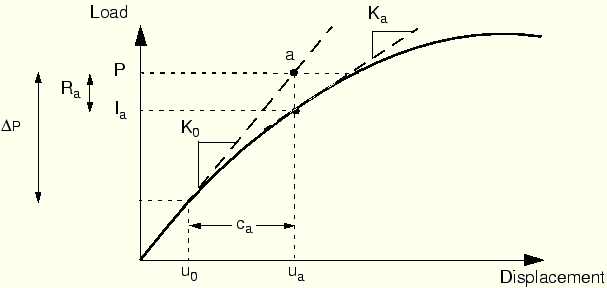

But I discovered I could use a "Connector Displacement" BC to enforce the displacment. Example I would not get the same strain if the connector was in rubber vs steel. I went with your first option, which still had the same problem, if I assign a force the resulting displacement/strain is a function of the force the the structure around the connector. RE: Creating Nonlinear Displacement Constraints IceBreakerSours (Bioengineer) 24 Jul 15 19:49

I am aware this example could easily be solved the symmetry, the end goal is not so simple so that won't work. The resulting strain would be a function of the delta T and the stiffness of the "truss" material and the stiffness of the surrounding material. I could use a truss element with expansion then change the "temperature" except this does not give direct control of strain. Certainly I could use disp-BC to tell the ends where to go, but that does not solve the problem. But as yet I have not been able to find a 2D line element that I prescribe the strain of. For instance I have thought that I could simple connect the two node of interest with a truss element, then if I could specify to truss element to strain X amount I would be business. I can apply that to displacement BC but this is still for the displacement in the global system, not the displacement relative to another node, which will also move.īelow is an image of a simple example, I need to be able to directly control the displacement/strain between the two nodes. I have been looking into the dependent amplitude definition this morning. I have not worked with those so I may be missing something. RE: Creating Nonlinear Displacement Constraints IceBreakerSours (Bioengineer) 24 Jul 15 10:18 If I can get this simple example to work I will be set after a little scripting. Ultimately I want to do this for more than two nodes and on a larger scale, but I don’t want to muddy the waters. But I don’t know where the two nodes will be (that is what I am solving for), all I know is their initial location (and therefore distance between them) and there final distance between them. The common quick response I get to this is just use displacement BCs. The constraint equation for this example would look like: Basically instead of applying loads I am applying displacement constraints. Then prescribe for the first load step that now the two nodes must be 0.95 cm apart, as a result the structure around this two nodes would deflect. In a simple example what I would like to do is be able to take two nodes in a 2D plane let’s say 1cm apart initially. Is there a way to create nonlinear displacement constraints? In the past I have used constraint equations to control displacement (interaction module>constraints>create>equation) but this method only allows you to enter a linear relationship.


 0 kommentar(er)
0 kommentar(er)
